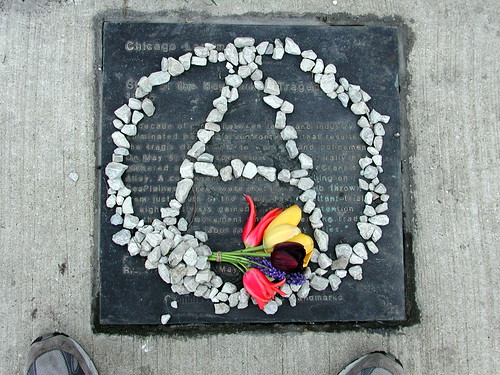A Criterion Collection release of a classic prison drama, meaning a quality print of beautiful black and white cinematography, as is the Criterion Collection’s norm.

In this intense prison drama, Burt Lancaster plays Joe Collins, the toughest inmate on the cell block, and Hume Cronyn is Capt. Munsey, a corrupt prison guard whose ruthless nature has made him the bane of Collins’s existence. After one infraction too many, Munsey assigns Collins and his fellow prisoners to the dreaded drain pipe detail. With the support of his cellmates, Collins hatches an escape plan that could cost him his life. [Netflix Brute Force]
Of course, in the days of the Hays Code, the prisoners could never win, could never escape, never triumph over the power of the State. Despite the obvious ending to comply with the Hays Code, Brute Force is a powerful tale, with the sympathy all on the side of the prisoners. According to the Wiki entry for the Hays Code, even this was taboo, not sure how it passed muster.
The Production Code enumerated three “General Principles” as follows:
- No picture shall be produced that will lower the moral standards of those who see it. Hence the sympathy of the audience should never be thrown to the side of crime, wrongdoing, evil or sin.
- Correct standards of life, subject only to the requirements of drama and entertainment, shall be presented.
- Law, natural or human, shall not be ridiculed, nor shall sympathy be created for its violation.
Bosley Crowther, in his 1947 review in the New York Times ((ain’t archived newspapers a great resource? I wish all media entities that have a historic record opened theirs up to the public)), wrote:
Not having intimate knowledge of prisons or prisoners, we wouldn’t know whether the average American convict is so cruelly victimized as are the principal prison inmates in “Brute Force,” which came to Loew’s Criterion yesterday. But to judge by this “big house” melodrama, the poor chaps who languish in our jails are miserably and viciously mistreated and their jailers are either weaklings or brutes.
As a matter of fact, the foremost prisoners in this latest Mark Hellinger film seem to be rather all-around good fellows who deserve our most generous regard. One is an ex-Army corporal who apparently took the rap for a murder done by his girl-friend on her black-marketing father in Italy. (It is this noble lad who suggests the tactic, a flanking movement, for the eventual prison break.) Another is a former bookkeeper who only stole a few thousand, after all, to give his dear wife a mink coat. (When he hears she has quit him, it breaks his sensitive heart.) Yet another is a cool and charming con man. And the leader—the big boy—is a gent who apparently took to banditry in order to support an invalid sweetheart.
On the other hand, the warden of the prison is an obvious ineffectual, the doctor is a philosophical drunkard and the captain of the guards is a rogue. Indeed, he is a cold and scheming sadist who thirsts for power over men, who beats a prisoner to the tearful strains of Wagner and bears a fearful resemblance to—you know who!
Another factoid, according to IMDb, most of the actors in this film were subsequently blacklisted during the House Un-American Activities Committee insanity:
When the Group Theater (1931-1940), the first American acting company to attempt to put the Russian Stanislavski’s principles into action, disbanded many of the actors who had participated in its revolutionary realistic productions on Broadway (“Awake and Sing” “Waiting for Lefty”) made their way to Hollywood in search of work; among them the character actors Sam Levene (“Miller”), Roman Bohen (“Warden”), and Art Smith (“Dr. Walters”)– all of whom can be seen in this film. As many of the actors in The Group were members of the Communist Party or leftist organizations, they would soon be blacklisted during the HUAC period along with the director of this film, Jules Dassin. In 1946, a year before the release of this film, Elia Kazan, one of the members of The Group Theater who named names, happened to be in Hollywood and saw a production of one of Tennessee William’s early plays “Portrait of a Madonna” directed by Hume Cronyn – who plays the sadistic Capt. Munsey in this film. Kazan was so impressed by the work of Cronyn’s wife, Jessica Tandy, that he offered her the role of Blanche Dubois in his Broadway production of “Streetcar Named Desire.”
Disc extras:
Criterion’s beautiful restored print of Brute Force is accompanied by a small collection of supporting materials, including a commentary track by longtime film noir experts Alain Silver and James Ursini. They give a good brief on the film’s history, such as the disagreements between producer Mark Hellinger and director Jules Dassin on the subject of the movie’s use of flashbacks–an approach that would break the claustrophobia of the prison sequences and introduce female characters. Hellinger wanted the backstory, Dassin objected, and the producer won; but the point is definitely arguable. Prison-movie specialist Paul Mason gives a useful 15-minute talk, partly on Brute Force and partly on the genre of prison movies. Criterion’s booklet has an excellent essay by critic Michael Atkinson, a vintage 1947 profile of the colorful columnist-turned-producer Hellinger, and an intriguing, bitter exchange of letters between Hellinger and Production Code chief Joseph Breen on the subject of the film’s censorship problems



















